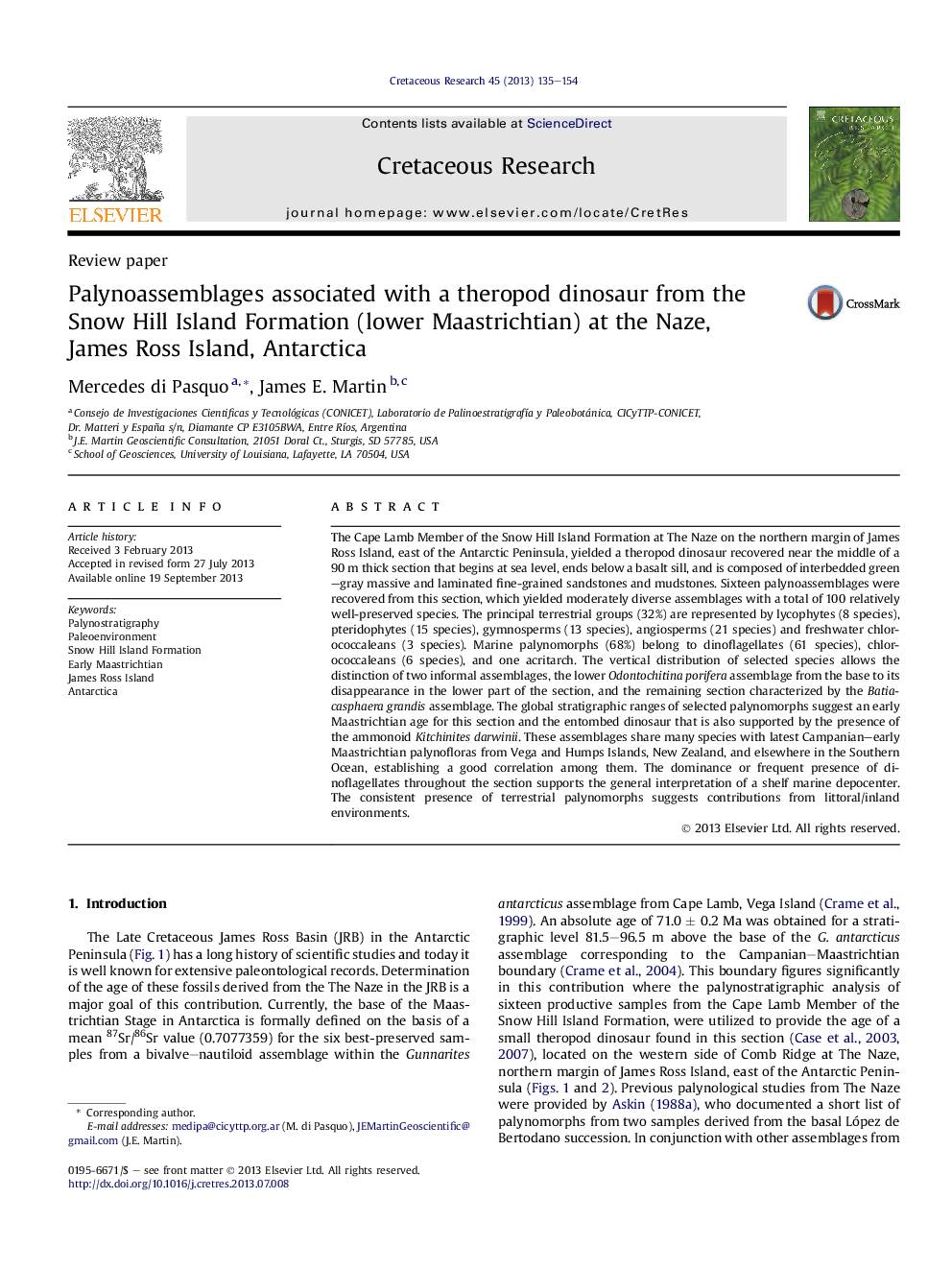| Article ID | Journal | Published Year | Pages | File Type |
|---|---|---|---|---|
| 4747301 | Cretaceous Research | 2013 | 20 Pages |
•The Snow Hill Island Formation at The Naze in Antarctica yielded a theropod dinosaur.•Diverse palynomorphs were recovered from this section in northern James Ross Island.•Global stratigraphic ranges of palynotaxa suggest an early Maastrichtian age.•Dinoflagellates all along the section support a shelf marine depocenter.•Terrestrial palynomorphs suggest variable contributions from the littoral/inland environments.
The Cape Lamb Member of the Snow Hill Island Formation at The Naze on the northern margin of James Ross Island, east of the Antarctic Peninsula, yielded a theropod dinosaur recovered near the middle of a 90 m thick section that begins at sea level, ends below a basalt sill, and is composed of interbedded green–gray massive and laminated fine-grained sandstones and mudstones. Sixteen palynoassemblages were recovered from this section, which yielded moderately diverse assemblages with a total of 100 relatively well-preserved species. The principal terrestrial groups (32%) are represented by lycophytes (8 species), pteridophytes (15 species), gymnosperms (13 species), angiosperms (21 species) and freshwater chlorococcaleans (3 species). Marine palynomorphs (68%) belong to dinoflagellates (61 species), chlorococcaleans (6 species), and one acritarch. The vertical distribution of selected species allows the distinction of two informal assemblages, the lower Odontochitina porifera assemblage from the base to its disappearance in the lower part of the section, and the remaining section characterized by the Batiacasphaera grandis assemblage. The global stratigraphic ranges of selected palynomorphs suggest an early Maastrichtian age for this section and the entombed dinosaur that is also supported by the presence of the ammonoid Kitchinites darwinii. These assemblages share many species with latest Campanian–early Maastrichtian palynofloras from Vega and Humps Islands, New Zealand, and elsewhere in the Southern Ocean, establishing a good correlation among them. The dominance or frequent presence of dinoflagellates throughout the section supports the general interpretation of a shelf marine depocenter. The consistent presence of terrestrial palynomorphs suggests contributions from littoral/inland environments.
